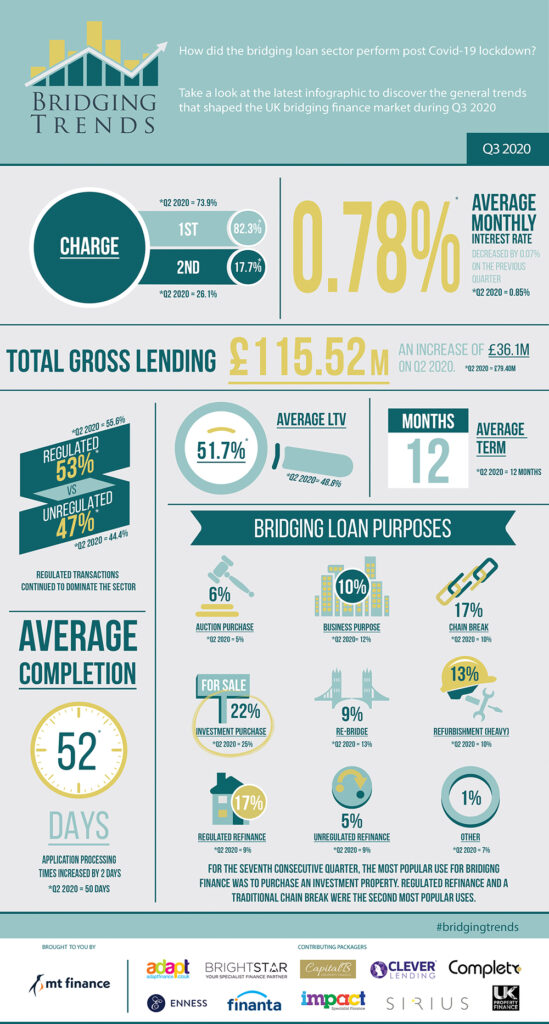Take a look at the infographic below to see the trends that shaped the bridging finance market in Q3 2020.
Key Points:
46% rise in bridging loan volumes in Q3
Regulated transactions continue to dominate the sector
Increase in demand for regulated refinance

Director’s comments
Gareth Lewis, commercial director at MT Finance comments:
“The stamp duty holiday and rising house prices has ensured that the market remains busy and it has been well publicised that the mortgage market is currently feeling the strain when it comes to delivering acceptable processing turnaround times, which can add to an already stressful experience. Luckily, bridging finance is a useful tool for brokers to help unlock a transaction for a client allowing them to meet deadlines without stress.
“Given the stress on a chain, presented by the slow processing times, it is unsurprising to see more clients turning to regulated bridging finance to support their purchases.”
Chris Whitney, Head of Specialist Lending at Enness, comments:
“Rates are down a bit, but I think we will see that drop much further in the next index, as price wars seem to dominate the market right now. LTV’s are still surprisingly modest suggesting responsible lending still dictates in most of the market. However, the front-page headline has to be the fact that lending volumes were up at over 45% higher than the previous quarter.
“From July onwards we saw some lenders who had been in a pandemic hibernation return so there was more choice of funding and others had started to go back to pre Covid-19 LTVs, making certain transactions viable again.
“In the last quarter lenders and key stake holders such as valuers and solicitors had also been able to refine systems and processes that had initially caused problems when lockdown hit in terms of handling volume.
However, I don’t think the increase was purely a supply-led cause. We have seen huge demand from borrowers as well. Some perhaps starting previously postponed projects and others looking to put a war chest together in case a pandemic led trauma in the overall economy created opportunities for them.
“It just goes to show how robust the industry is and how important it is to the economy. I think demand will continue to increase as we still see many high street lenders closed to new businesses or being very restrictive as to what sectors they will lend into and on what terms.”
Craig Hardiman-Scott, Senior Associate at Sirius Property Finance, comments:
“Customer demand is extremely high, so it comes as no surprise that the short-term loan market continues to be very buoyant from developer exits through to business capital injections to name but a few.
“Those with competitive rates, products, and service that have been able to adapt their offerings throughout the pandemic are well placed to continue seeing the benefits.”
